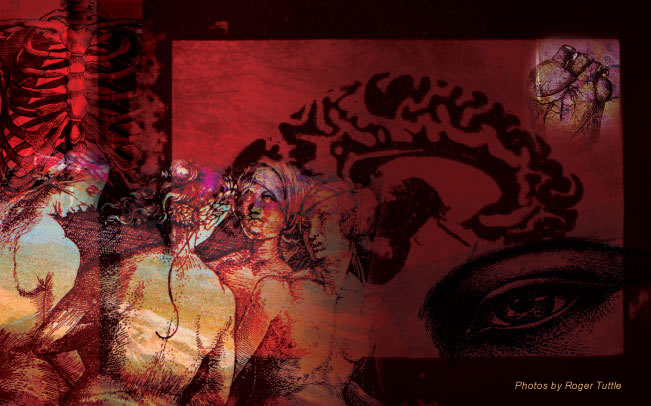
|
|
About Continuum Advertising Advisory Committee Archives Contact Us Continuum Home Faculty/Staff Subscribe related websites Alumni Association Marketing & Communications University of Utah Home |

|
|||||||||||||||||||||||||||||||||||||||||||||||||||||||||||||||||||||||||||||||
Barbara J. Graves |
||
 |
Professor and Chair, Department of Oncological Science. Senior Director, Laboratory Research, Huntsman Cancer Institute. Respected scientist and first female department chair in basic sciences at the U. Co-discoverer of ETS family of gene regulators. | |
| Born: Education: Started at the U: |
Bogalusa, La. B.A., Rice University Ph.D., University of Washington 1986 |
|
| I’m passionate about discovery science. Extending my knowledge and figuring out how things work…research is where my creative energies continue to be nurtured. It’s been my privilege to be part of academic research for 30 years, and a real pleasure to work at that level on the frontier of knowledge. Science is just plain exciting, and it’s really cool to watch the discoveries unfold. At the Huntsman Cancer Institute, which layers on a mission for impacting public health, there’s a second dimension to discovery science. We’re setting up institutional structures that allow knowledge to be brought to human health problems directly, taking discoveries made in the laboratory and using them to impact clinical problems. We’re getting laboratory scientists talking to physicians so we can bring those two worlds closer together. On the leadership side, all of us have strengths as individuals, but if an organization can build a framework that encourages synergy and collaboration, then it’s bigger than its parts, and that kind of community-building I find personally rewarding. When I see people empowered to take ownership of their organization, people who want to pursue a common goal, it creates an energy that is different from a single person aspiring to fame and individual rewards. So figuring out how to make that happen in an academic setting is challenging and, when it works, very rewarding. | ||
Catherine R. deVries |
||
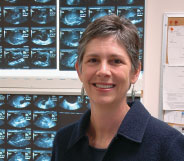 |
Clinical Professor of Surgery (Urology). International leader in surgical (urological) education. Founded International Volunteers in Urology. Received the American Medical Association’s Dr. Nathan Davis Award for Excellence in International Medicine, 2006 | |
Born:
|
San Francisco, Calif. B.A., Harvard University M.S., Duke University M.D., Stanford University 2000 |
|
| I like the challenge of going into the unknown and trusting that we can make it work by adapting to different situations. There’s a certain high that comes when we’re all working together on a surgical team and it clicks. I liken it to the performing arts—it’s that kind of collaboration. There’s an aesthetic flow, a joy. I find my international trips totally intriguing, because every country and every system is different, so what you have to do to make it fly each time is going to be different. If the team is prepared and it all comes together, then we have a patient who is healing and everybody has learned something new. But the creative aspect is not just the individual patient’s surgery; it’s also building the kind of teamwork that will work within a larger medical system. It puts us right back up there on that steep learning curve. That’s scary—and pleasurable. The people we visit are excited because we’re bringing them new information. But they’re also thrilled just because we’ve shown up. It’s no small thing having a doctor or a whole team take the time to get on a plane and travel to work with the local doctors and nurses who struggle to take care of their difficult patients. So when we show up for free and bring some new skills, they’re delighted. And I’m having the time of my life because of it. | ||
Kathleen Digre |
||
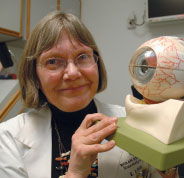 |
Professor, Neurology and Ophthalmology. Director, Center of Excellence in Women’s Health Demonstration Project for Utah. First female president of the North American Neuro-Ophthalmology Society. Known as the “Headache Queen” for her clinical work on migraines. Established the neuro-ophthalmology and headache clinics at the University of Utah in 1987. | |
| Born: Education: Started at the U: |
Minneapolis, Minn. B.A., Augustana College M.A., University of Arkansas M.D., University of Iowa 1987 |
|
| Rose Kennedy once told her kids, “To whom much is given, much is expected,” and I’ve been given a lot. I’ve been given the gift of energy—my Norwegian grandmother had high energy into her 90s—and I’ve been given the tools to make a difference. Now I want to give back for all the things I’ve received. And I’ve received a lot from this University. The big change for me came in 1999. I took a sabbatical to write a book on neuro-ophthalmology and went to Tibet. I also attended a course designed to develop executive leadership in women who work in academic health centers across the country. That whole year showed me how I could fit in and do some things to be helpful. It altered me and put me on a different track. I started to see the big picture. I wanted to give back to everything. Things like that change your life. But without the gifts I’ve been given—the genetic inheritance coupled with the tools from the leadership training—I might not have had the wherewithal to do what I’m doing. After that, opportunities just came my way, like the Center of Excellence project and the neuro-ophthalmology virtual library. And now I’m working with some wonderful people who share that same vision—the vision that we can make something happen. | ||
Kirtly Parker Jones |
||
 |
Professor, Vice Chair for Educational Affairs, Department of Obstetrics and Gynecology. Prominent physician and veteran educator. Outspoken advocate for women’s reproductive health. | |
| Born: Education: Started at the U: |
Freiburg, Germany B.A., University of Colorado M.D., University of Colorado School of Medicine 1983 |
|
| Reproductive medicine sings with my soul—it’s incredibly beautiful. It’s elegant. It’s right at the forefront of how women make choices in their lives. I love this work. Showing it to newcomers—the students and residents—makes it all new again. Teaching is a selfish act. You get to share what you love the most with someone who hasn’t seen it before. When I was 20, I wanted to grow up and teach biology in a small college and wear really cool clothes. But finding one’s true calling is about being at the right place at the right time with the right mentors. The forest can look pretty dark, and if someone hadn’t turned a light on so I could see a path and walk it, I wouldn’t have made that choice to go into medicine. It is very important to be mentored. It is what we should be doing here at universities. It’s that very personal attention to someone’s future that makes a difference. So now I get to hear from my students. Now I actually teach and practice biology as someone who does in vitro fertilization in a really big college. I haven’t quite gotten to the cool clothes yet, but I hope to someday. | ||
Rebecka L. Meyers |
||
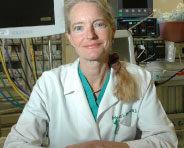
|
Chief, Pediatric Surgery, Primary Children’s Medical Center. Associate Professor, Surgery. Associate Professor, Pediatrics. Specializes in children’s surgical oncology and the treatment of liver tumors of children. Established the Pediatric Liver Transplant Program at Primary Children’s Medical Center. Served as team leader of six surgeons in the celebrated 2006 separation of ischiopagus (complexly connected in the lower half of the body) conjoined twins. | |
| Born: Education: Started at the U: |
Salt Lake City, Utah B.A., Human Biology, and B.A., Philosophy, Stanford University M.D., Oregon Health Sciences University School of Medicine 1994 |
|
| The job of a pediatric surgeon has a lot of ups and downs. I get down if one of my really sick patients doesn’t recover. I get attached to my patients—they become part of me. But I’m mostly up, because being able to save the life of a child is truly amazing. I can’t describe what it’s like to be able to take a sick child and give that precious life back to his or her mom and dad. It’s unreal. There can’t be a more special gift in life than being able to tell a parent, “Your child is cured.” And surgery does it in a concrete way. It can sometimes be pretty frightening …. You have to just go in and do it. Our surgery on the conjoined twins in 2006 captured the public’s imagination. It not only brought the surgeons together, but it also brought the hospital and the whole community together. Everyone felt as if those darling twins were their own kids. Curiously, though, that celebrated surgery wasn’t too much different from what we do every day—it’s just that there were a lot of procedures to be done all in one case…and of course it was very public. It was so rewarding to see the girls, now separate, wake up and smile and know that they were going to be okay. It’s more than a privilege to do what I do, it is a gift. | ||
Bonus Web content: Meet two more of the U's exceptional doctors
Joyce A. Mitchell |
||
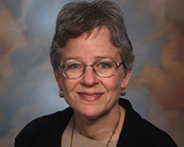 |
Professor and Chair, Department
of Biomedical Informatics, School of Medicine |
|
|
Born: Started at the U: |
Casper, Wyoming |
|
| “What can I do to support the students, faculty, and administrators in using their talents to be successful?” This is the question that motivates Joyce Mitchell in her work at the School of Medicine as chair of the Department of Biomedical Informatics—the science that studies how information science, statistics, and computer techniques are applied to biomedical and public health problems. “We want to assist researchers by providing them with the information they need to do their job,” says Mitchell. “We translate the results of biological research into the clinical arena. Our department has been instrumental in the entire field of electronic medical records and the use of this data for improving quality and patient care.” Mitchell’s interest in biomedical informatics was awakened during an interview with a professor at the University of Missouri who was running a program on medical information science. “It was serendipity,” she says. “He said informatics was an up-and-coming thing and that I could make a big splash if I found it interesting.” Since Mitchell had a doctorate in genetics and a quantitative background, her professor told her she was in a great position to move into the field and offered her a fellowship. “It was a leap-of-faith moment in my life,” she says. “I was in the right place at the right time and decided to try it.” She later completed an additional postdoctoral fellowship in medical genetics and strengthened the link between her genetics background and medical informatics. She spent 25 years on the faculty at the University of Missouri. In 2005, she was recruited for the position of department chair at the University of Utah. “The U’s reputation in biomedical
informatics and genetics research was already internationally
known,” she says, “so the opportunity to think about
how these two fields might be brought together in order to facilitate
the University’s impact in personalized medicine was especially
exciting. To take the results from the Human Genome Project
and apply it to improve outcomes by personalizing it to the
individual, well, something just clicked, and it sounded like
fun.” |
||
Leigh Neumayer |
||
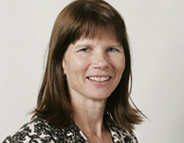 |
Professor of Surgery, School of Medicine. | |
|
Born:
|
Lincoln, Nebraska |
|
|
For Leigh Neumayer, the most enjoyable aspect of medical school was performing surgery. “Even though it meant getting up early and working long, hard hours, I loved being in the operating room,” she says. Today, Neumayer juggles her time between University Hospital, Huntsman Cancer Hospital, and the George E. Wahlen V.A. Medical Center. Although she does no classroom teaching, she interacts with students and residents on a regular basis in the hospital setting. The daughter of a general surgeon, Neumayer came to surgery naturally.
“It’s a fun job. I like coming to work every day and
the individual interaction with the patients,” she says.
Neumayer feels lucky to be in a profession where she can impact
people’s lives, not only by working with individual patients,
but also by helping to make national policy. She is one of 33
national directors of the American Board of Surgery and serves
on the executive committee of the Board of Governors for the American
College of Surgeons. “It’s my patients who inspire
me,” she says. “I want to do the very best for them.
There are lots of other professions I’d be happy working
in, but this one challenges me on a daily basis. I’m tired
when I wake up, but 95 percent of the time I’m excited to
come to work.” |
||
